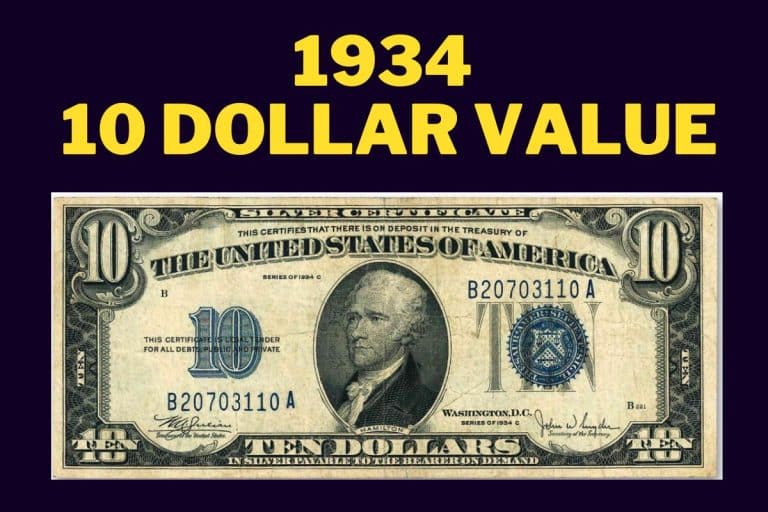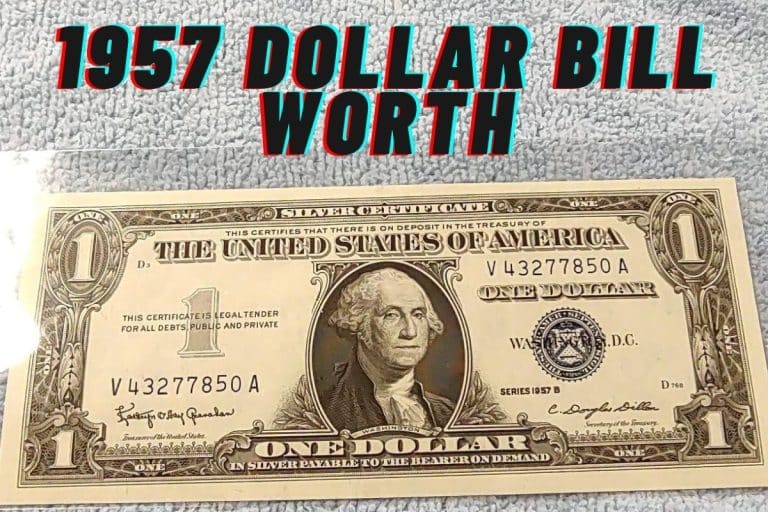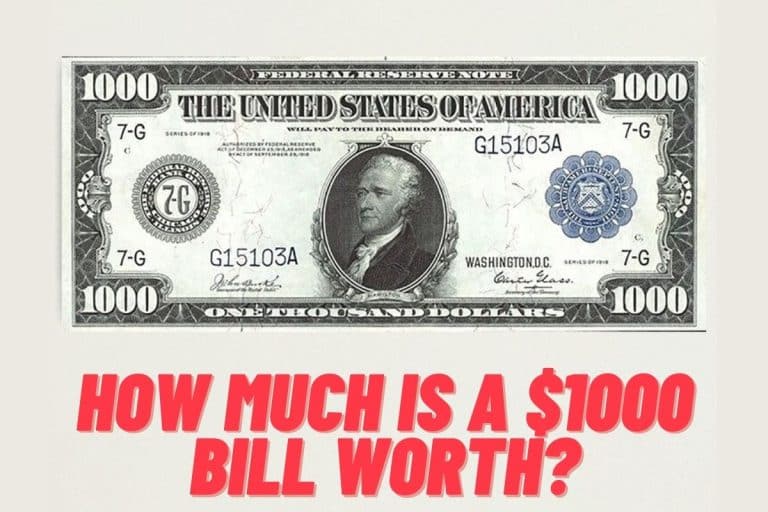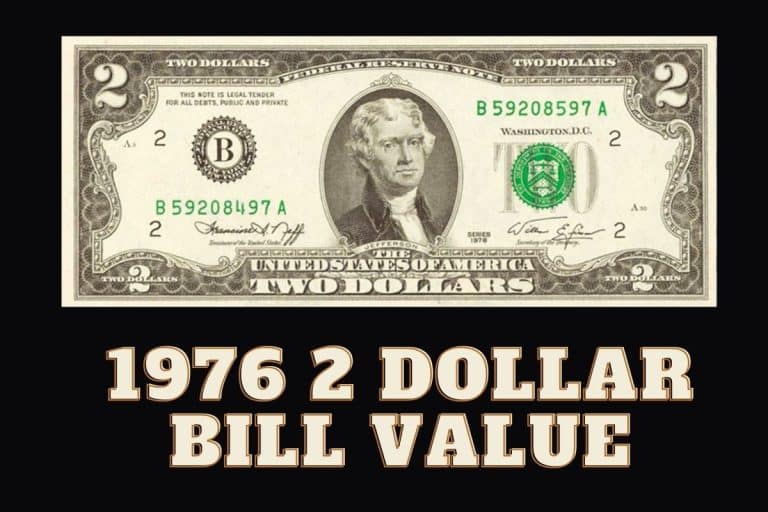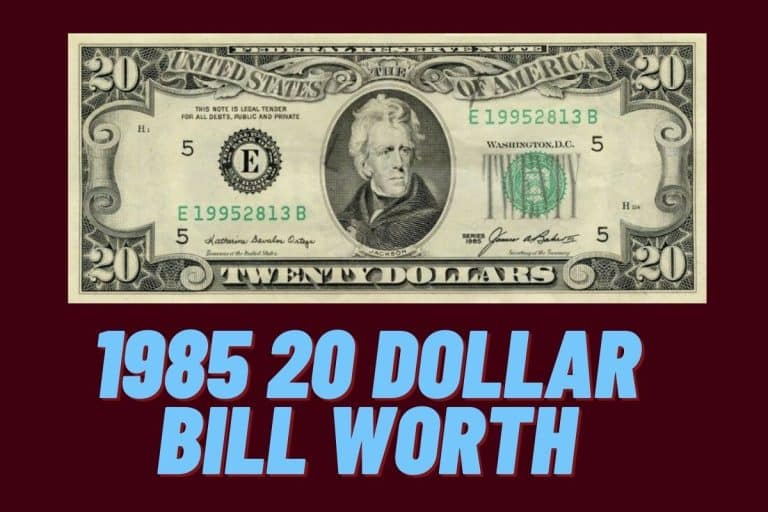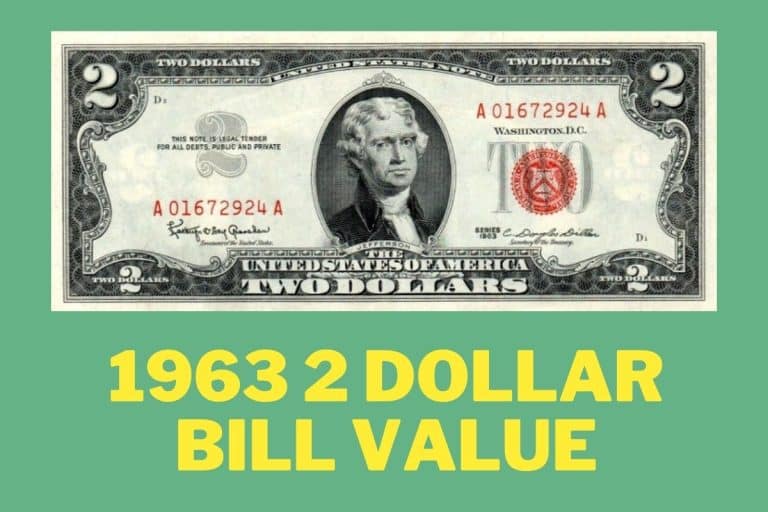Have you ever heard of a $10,000 dollar bill? Holding a rare $10,000 note can be a cause of great pride and an impressive addition to any currency collection. They provide an intriguing glimpse into our money's history and are currently part of a unique piece of US currency.
This comprehensive guide provides valuable information on the $10,000 bill value, including its history, rarity, and factors that influence its worth. Whether you're a collector or simply curious about this high-denomination banknote, this guide will help you understand its value and significance in the world of currency.
History of the 10,000 Dollar Bill
The $10,000 bill is the highest-value bill to ever be in circulation. It was last printed in 1946 and officially discontinued in 1969. It featured a portrait of Salmon P. Chase, the Secretary of the Treasury under President Abraham Lincoln, on the front and an image of the U.S. Treasury Building on the back.
The bills were initially introduced in 1918 as part of a series of high-value bills that included $500, $1,000, and $5,000. These bills were primarily used for transactions between banks and were not intended for general circulation.
In 1928 and 1934, the government produced additional $10,000 bills. The majority of bills owned by collectors today come from this production.
During the Great Depression, the federal government began to crack down on the use of high-value bills, as they were considered a tool for tax evasion and other illegal activities such as organized crime. In 1969, the Federal Reserve announced that it would no longer issue any bills larger than $100, effectively ending the use of high-value bills in the United States.
Today, the $10,000 bill is highly sought after by collectors and is worth far more than its face value.
Value of 10,000 Dollar Bills
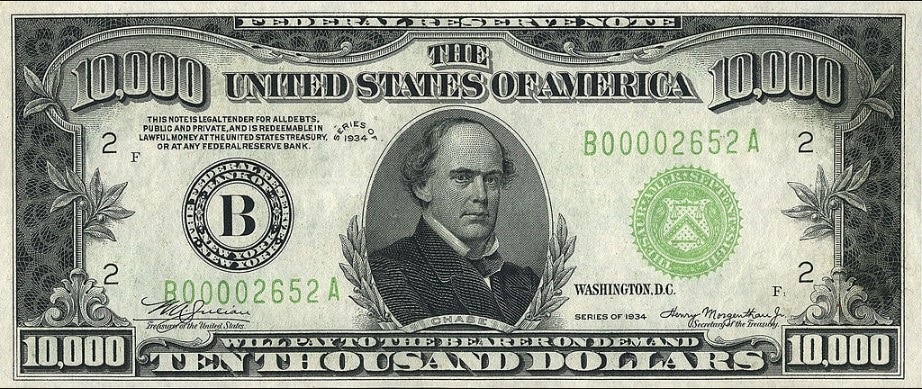
The value of a $10,000 bill depends on a variety of factors, including:
Condition
Bills in excellent condition, with no folds, creases, or damage, are worth more.
- In 2003, a 1934 $10,000 bill was auctioned at $384,000. Paper Money Guaranty graded it as being in remarkable condition.
- In 2015, another 1934 $10,000 bill was sold for $123,000. It was in poor condition and required minor restorations before being auctioned. The huge difference in price shows that a well-maintained bill is more valuable.
Rarity
Since the $10,000 bill was discontinued in 1969, the number of bills in circulation has steadily declined.
The 1918 $10,000 bills are limited as only a few hundred authenticated samples survive that are in good condition. Currently, the only 1918 bills known to exist are in museums or government institutions.
The 1928 and 1934 bills are estimated to have been produced in thousands. Their value is significantly less since they are more available.
Historical Significance
Some $10,000 bills may have historical significance that adds to their value. For example, a bill owned by a famous person or used in a notable transaction may be worth more than a similar bill with no such history.
Demand
The demand for $10,000 bills among collectors and investors can also impact their value. If more people are looking to buy $10,000 bills than there are bills available, the value will increase.
Grading system
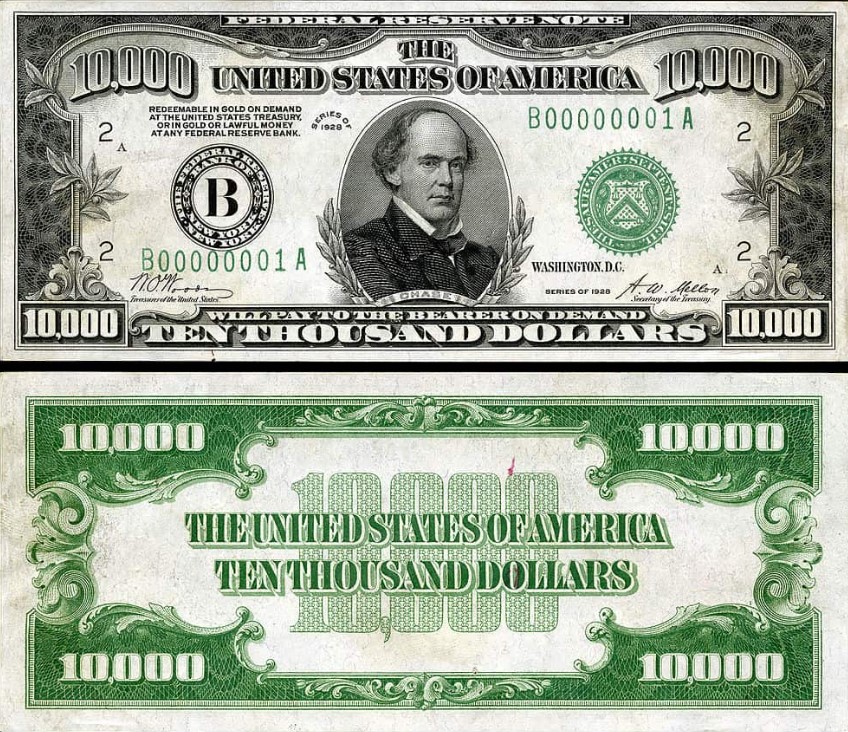
The grading system used for paper currency, such as the $10,000 bill, is called the Sheldon grading scale, which ranges from 1 to 70, with 70 being a perfect, uncirculated note.
When grading a $10,000 bill, several factors are taken into consideration:
- Overall condition
- The presence of folds
- Creases
- Tears
- Color brightness
- The quality of the printing
Here are the various grades and their descriptions:
1. Uncirculated (UNC): This bill has never been used or circulated and is in pristine condition.
2. About Uncirculated (AU): This bill may have some slight signs of handling but is still in excellent condition overall.
3. Extremely Fine (EF): This bill may show some light wear and minor signs of handling, but it is still in excellent condition.
4. Very Fine (VF): This bill has been used and may show some wear, but it is still in reasonably good condition.
5. Fine (F): This bill has been used and may show significant signs of wear, such as folds, creases, or tears.
6. Very Good (VG): This bill has been heavily used and may have multiple folds, creases, and other signs of wear.
7. Good (G): This bill has been heavily used and may be heavily creased or torn in places, but it is still intact.
8. Poor (P): This bill has been heavily used and is in deplorable condition, with significant damage and tearing.
Common 10,000 Dollar Bills
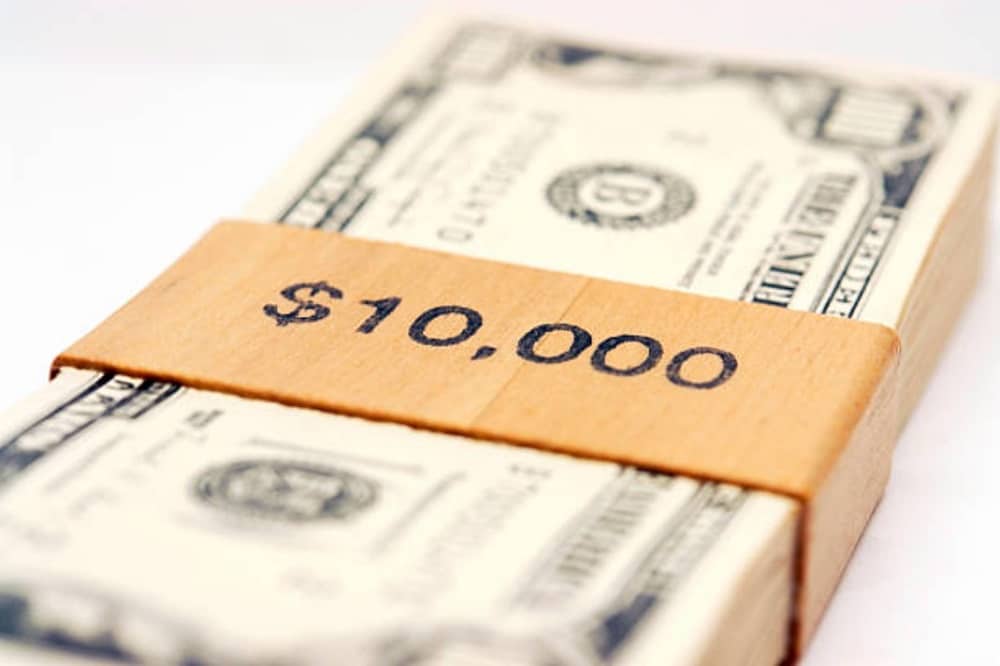
The $10,000 bill was only issued as a Federal Reserve Note, which is a type of currency issued by the Federal Reserve System, the central banking system of the United States.
Silver Certificates and Gold Certificates were also issued in high denominations, including $10,000 denominations, but they were never actually printed in those denominations.
On the other hand, National Bank Notes were issued by individual banks and backed by U.S. government bonds held by the issuing bank. The notes were also issued in high-value denominations, including $10,000, but they are rare and highly sought after by collectors.
Where to Sell a 10,000 Dollar Bill
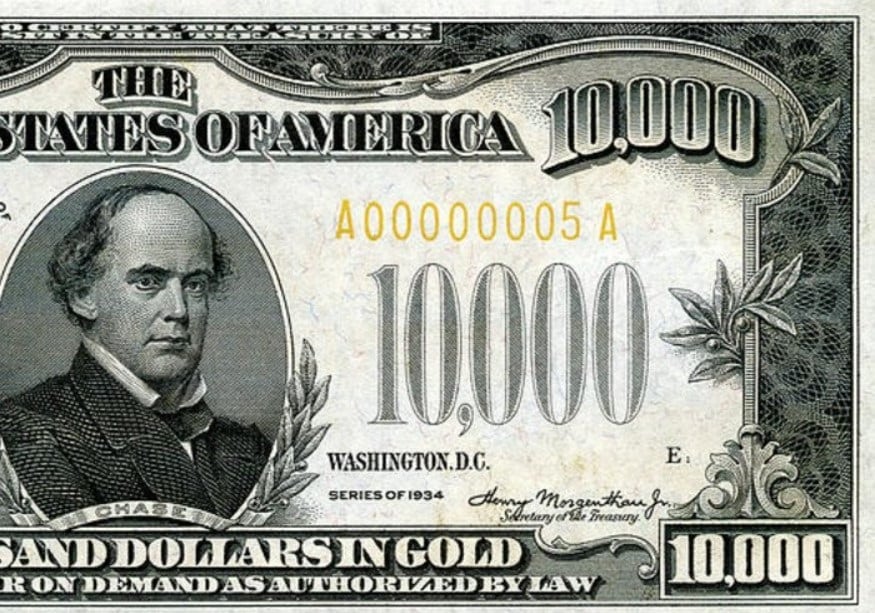
1. Currency Dealers
Many currency dealers specialize in buying and selling rare and valuable currency, including high-denomination bills like the $10,000 note. These dealers often have the expertise and resources to value your bill accurately and offer a fair price.
2. Online Auctions
Online auction sites like eBay and Heritage Auctions often have a selection of rare currency, including $10,000 bills. Selling your bill through an online auction can allow you to reach a larger audience of potential buyers and may fetch a higher price, although you will need to pay a commission to the auction house.
3. Local Coin Shops
Some coin shops may also be interested in buying rare currency, but their expertise in this area may vary. It's a good idea to call ahead and ask if they are interested in purchasing a $10,000 bill before bringing it in.
Conclusion
It is important to research beforehand and ensure that you're working with a reputable buyer who will offer you a fair price for your bill. Having your bill authenticated and graded by a professional grading service is also a good idea before attempting to sell it.

